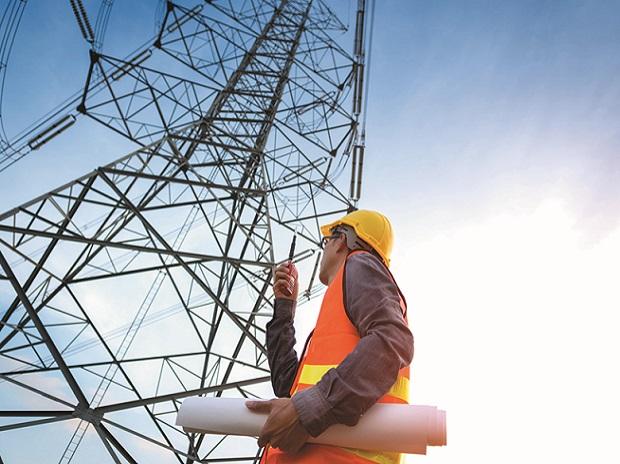Strong Performance By Jio, Bharti To Buoy Telecom Growth For FY21: Fitch

The Indian telecom industry's mobile segment is expected to log EBITDA growth of at least 40 per cent in the current fiscal year, higher than 25 per cent in 2019-20, helped by strong showing so far by Reliance Jio and Bharti Airtel, according to Fitch Ratings.
EBITDA or earnings before interest, taxes, depreciation, and amortization is a measure of a firm's broad financial performance.
Among other highlights, Fitch expects industry monthly ARPU (average realisation per user) to grow by 5-10 per cent in 2021-22 as 2G and 3G customers gradually upgrade to pricier 4G plans.
It said another tariff hike "is possible" in 2021 given that struggling Vodafone Idea -- whose ARPU is 30 per cent lower than Bharti's -- may raise tariffs to improve cash flows.
Fitch said Bharti and Jio are likely to bid to renew their expiring spectrum in the upcoming auctions in March 2021 and may also bid to acquire spectrum in the sub-1GHz band, which can be used for 5G services.
"We have assumed Bharti will set aside USD 500 million in FY21 and USD 1 billion in FY22 for upfront spectrum investments. We believe that the company is unlikely to launch 5G services before 2022," Fitch said.
It is pertinent to mention here that the government has already set the ball rolling for the spectrum auction, in which radiowaves valued at Rs 3.92 lakh crore will be put on the block. The auction in seven spectrum bands for mobile services - 700, 800, 900, 1800, 2100, 2300 and 2500MHz bands - is scheduled to start from March 1.
Airtel has in fact made it clear that it is keen on a "full footprint" of sub-GHz radiowaves across the country to boost coverage indoors and in rural areas, as it pursues an optimised spectrum strategy that balances renewal and capacity needs.
Fitch Ratings expects the Indian telecom industry's mobile segment EBITDA to increase by at least 40 per cent in 2020-21, compared with 25 per cent in the previous financial year. This is on account of "strong performances" by Reliance Jio and Bharti Airtel in nine months of the current fiscal year.
"EBITDA growth at Jio and Bharti will be driven by higher tariffs, user migration to 4G and high monthly data usage of 12GB-16GB per user as pandemic-led restrictions encouraged users to work from home and use remote-access technologies," it said.
The pandemic-led economic slowdown has had little impact on Indian telcos, as data traffic continues to increase even after the lockdowns were lifted.
Jio's revenue and EBITDA grew by 33 per cent and 50 per cent, respectively, year-on-year in nine months of 2020-21, while Bharti posted Indian mobile revenue and EBITDA growth of 26 per cent and 48 per cent, respectively, in the same period.
"Jio , which leads the mobile market with 411 million customers, added 41 million subscribers during last four quarters and increased its monthly ARPU by 18 per cent year-on-year to Rs 151. Bharti gained 25 million customers to reach a total subscriber base of 308 million, higher than our expectations, and reported a 23 per cent year- on-year rise in monthly ARPU to Rs 166...," it said.
Fitch sees Jio and Bharti increasing their combined revenue market share to 80 per cent at the expense of third-placed Vodafone Idea, which is expected to lose 50-70 million subscribers in the next 12 months.
"Sector capex is likely to remain flat in FY22, barring spectrum payments, as both Bharti and Jio front-loaded investments to expand 4G coverage and capacity and built up fibre networks and in-building coverage," it said.
Bharti could generate small positive free cash flow in 2020-21, as operating cash generation is likely to rise and will be used to fund flat core capex, excluding one-time spectrum payments and adjusted gross revenue dues, it added.
Meanwhile, Moody's said Bharti Airtel's leverage is improving, as profitability of Indian mobile business continues its recovery. While receding competition provides better prospects for future price hikes, weak consumer sentiment amid the pandemic remains a challenge, it said.
"Therefore, we do not expect a meaningful price increase anytime soon. In our view, another industrywide tariff hike, like the one implemented in December 2019, is necessary to drive a further substantial improvement in cash flow generation and ultimately debt reduction and leverage," Moody's said in its note.
(Only the headline and picture of this report may have been reworked by the Business Standard staff; the rest of the content is auto-generated from a syndicated feed.)
Stablecoin The Future Of Currency?
The payments system is undergoing a quiet but consequential shift. What was once the exclusive preserve of central banks... Read more
BoE Loosens Capital Rules
The Bank of England has taken a significant step towards easing post-crisis regulation by lowering its estimate of the c... Read more
Monzo Looks For US Banking License
Monzo is preparing a renewed push to secure a US banking licence, four years after abandoning its first attempt when tal... Read more
Crypto Firms Push Into US Banking
America’s cryptocurrency companies are scrambling to secure a foothold in the country’s traditional banking system, ... Read more
Parallel Banking: Stablecoins Are Now Global
Parallel Banking: How Stablecoins Are Building a New Global Payments SystemStablecoins—digital currencies pegged to tr... Read more
JPMorgan Deploys AI Chatbot To Revolutionize Research And Productivity
JPMorgan has deployed an AI-based research analyst chatbot to enhance productivity among its workforce, with approximate... Read more

